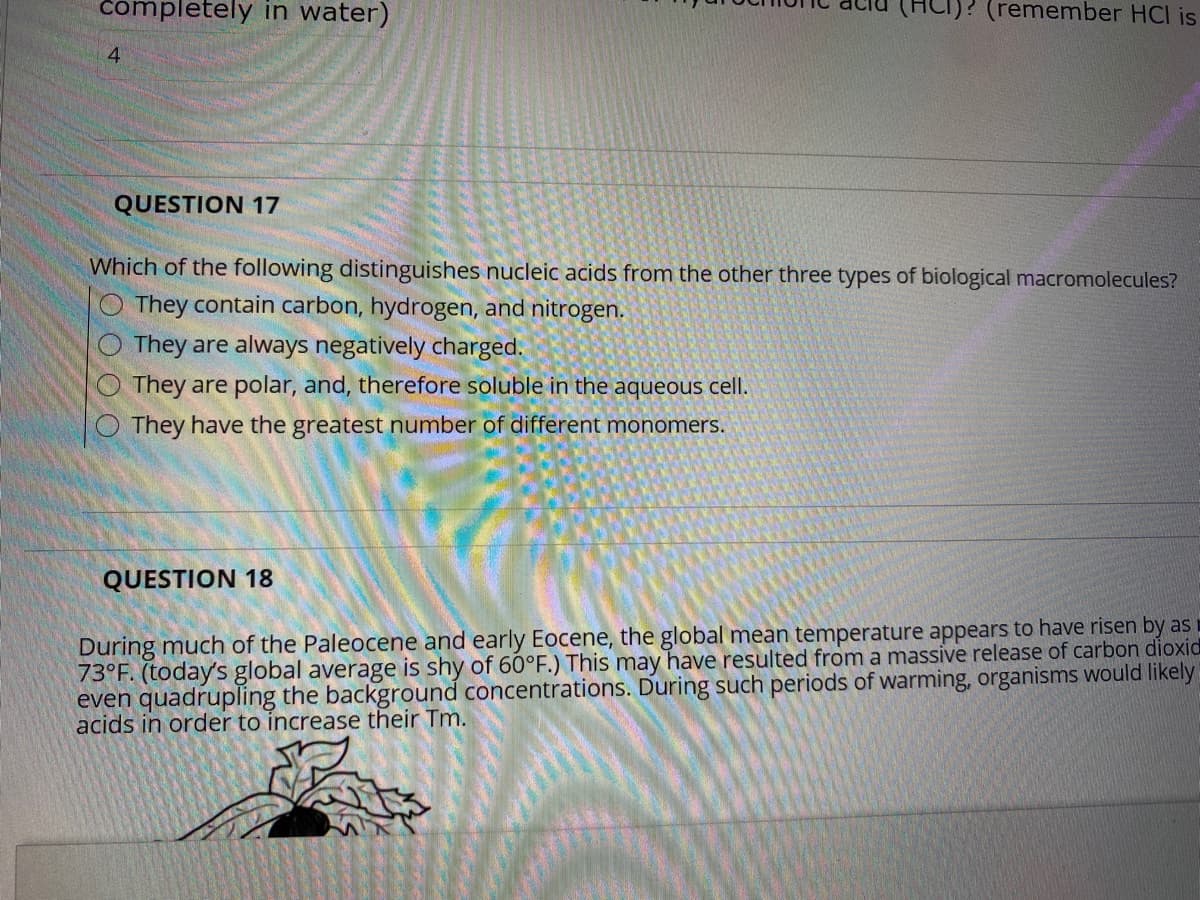Which of the following distinguishes nucleic acids from the other three types of biological macromolecules? O They contain carbon, hydrogen, and nitrogen. They are always negatively charged. They are polar, and, therefore soluble in the aqueous cell. They have the greatest number of different monomers.
Which of the following distinguishes nucleic acids from the other three types of biological macromolecules? O They contain carbon, hydrogen, and nitrogen. They are always negatively charged. They are polar, and, therefore soluble in the aqueous cell. They have the greatest number of different monomers.
Biology Today and Tomorrow without Physiology (MindTap Course List)
5th Edition
ISBN:9781305117396
Author:Cecie Starr, Christine Evers, Lisa Starr
Publisher:Cecie Starr, Christine Evers, Lisa Starr
Chapter2: Molecules Of Life
Section: Chapter Questions
Problem 1FIO: A. The first shell corresponds to the first energy level, and it can hold up to 2 electrons....
Related questions
Topic Video
Question
17

Transcribed Image Text:completely in water)
C)? (remember HCI is
4
QUESTION 17
Which of the following distinguishes nucleic acids from the other three types of biological macromolecules?
O They contain carbon, hydrogen, and nitrogen.
They are always negatively charged.
They are polar, and, therefore soluble in the aqueous cell.
O They have the greatest number of different monomers.
QUESTION 18
During much of the Paleocene and early Eocene, the global mean temperature appears to have risen by as
73°F. (today's global average is shy of 60°F.) This may have resulted from a massive release of carbon dioxid
even quadrupling the background concentrations. During such periods of warming, organisms would likely
acids in order to increase their Tm.
Expert Solution
This question has been solved!
Explore an expertly crafted, step-by-step solution for a thorough understanding of key concepts.
Step by step
Solved in 2 steps

Knowledge Booster
Learn more about
Need a deep-dive on the concept behind this application? Look no further. Learn more about this topic, biology and related others by exploring similar questions and additional content below.Recommended textbooks for you

Biology Today and Tomorrow without Physiology (Mi…
Biology
ISBN:
9781305117396
Author:
Cecie Starr, Christine Evers, Lisa Starr
Publisher:
Cengage Learning

Biology: The Dynamic Science (MindTap Course List)
Biology
ISBN:
9781305389892
Author:
Peter J. Russell, Paul E. Hertz, Beverly McMillan
Publisher:
Cengage Learning


Biology Today and Tomorrow without Physiology (Mi…
Biology
ISBN:
9781305117396
Author:
Cecie Starr, Christine Evers, Lisa Starr
Publisher:
Cengage Learning

Biology: The Dynamic Science (MindTap Course List)
Biology
ISBN:
9781305389892
Author:
Peter J. Russell, Paul E. Hertz, Beverly McMillan
Publisher:
Cengage Learning


Human Biology (MindTap Course List)
Biology
ISBN:
9781305112100
Author:
Cecie Starr, Beverly McMillan
Publisher:
Cengage Learning